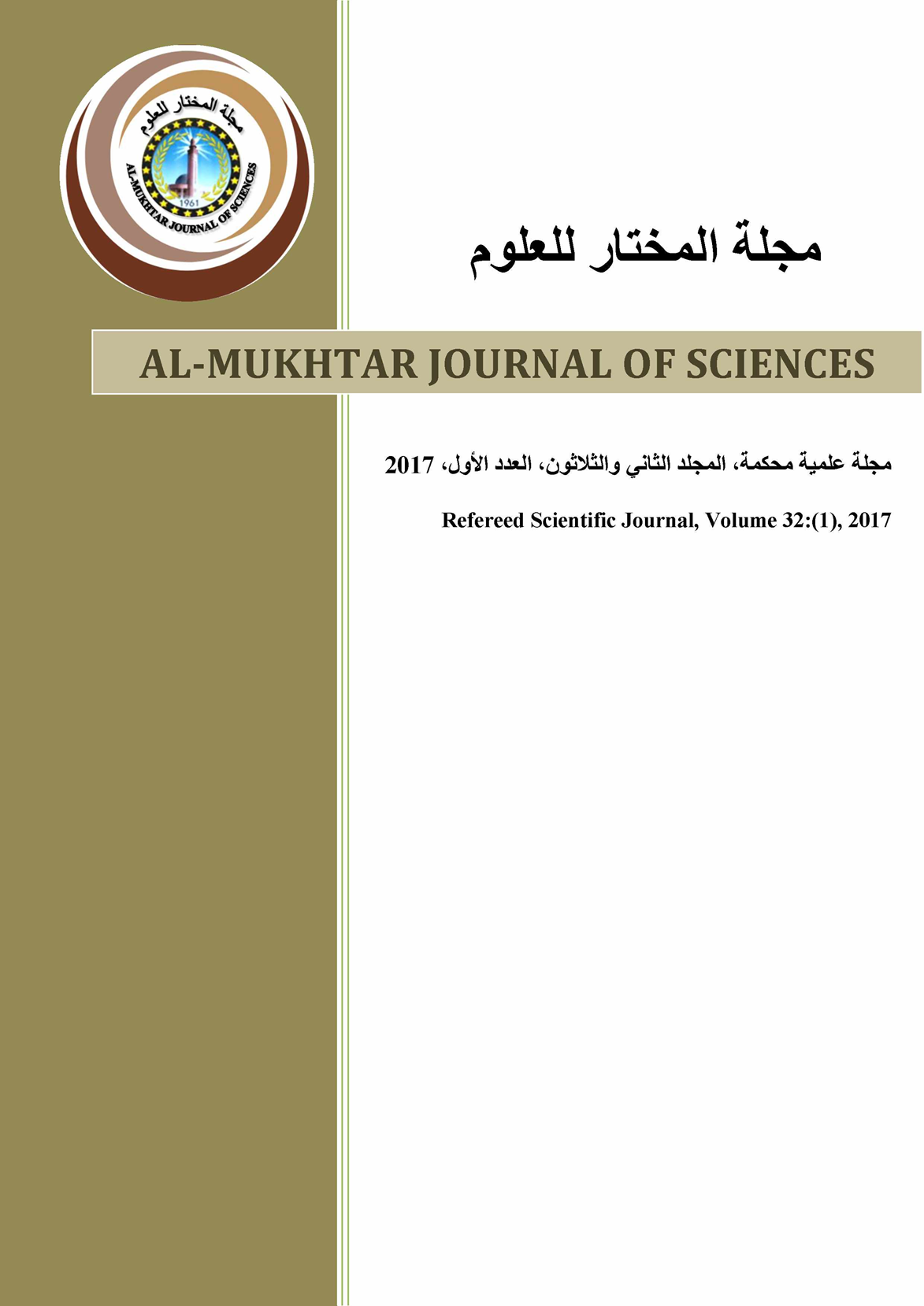Effect of the Seasons and Salt Concentrations on Microbial Load of Wet-Salted Fermented Product (Fassiekh)
DOI:
https://doi.org/10.54172/mjsc.v32i1.93Keywords:
Salt concentration, Seasons, Microbiological analysis , FessiekhAbstract
The study aims at investigating the microbial load of wet-salted fermented product (a traditional fermented product in Sudan named locally; fassiekh) and determination of total viable bacterial count, according to salt concentrations (20%, 25% and 30% of the fish weight) and seasons (summer, autumn and winter) variations. Fessiekh processed from popular fessiekh fish species (Hydrocynus spp, local name: Kass).The isolation and identification of bacteria and mould were examined for the microbial quality of fassiekh. The total viable count of bacteria in fresh fish used as raw materials in fessiekh preparation (Hydrocynus froskalii), ranged from 2x103-5.5x103cfu/g. The concentrations of salt had direct effect on the microbial quality of salted Hydrocynus froskalii. It was observed that the total bacterial count was increased during the first five days in summer and autumn while at winter season it showed increases till the tenth day, followed by remarkable decreasing. The counts began to decrease as salting proceeded. Five Staphylococcus spp (Staph.aureus, Staph.rostri, Staph.lentus, Staph.epidermidis and Staph.pyogen) were isolated from all samples of salted fish and appraises about 46.77% of total isolates. Also three species of Micrococcus were isolated (Micro.leuteus, Micro.roseus and Micro.lactis), and Aerococcus viridans, and they represented 36.17% & 12.9% of all isolated samples respectively. The viable bacteria counts of commercial fessiekh were significantly higher (p<0.05) when compared to the experimentally salted fish at the same salt concentrations. No yeasts or fungi were detected in tested samples.
Downloads
References
Ahmed, E. O., Ali M. E., and Hamed A. A. (2010). Quality changes of salted kass (Hydrocynus forskalii) during storage at ambient temperature (37±1) ºC. Paki. Journal of Nutrition 9(9):877-881.
Anihouvi, V., Kindossi J., and Hounhouigan J. (2012). Processing and quality characteristics of some major fermented fish products from Africa: a critical review. Int Res J Biol Sci 1(7):72-84.
Barrow GHandFeltham, R. (1993). Cowan and Steel s Manual for Identification of Medical Bacteria. Cambridge University Press, Cambridge.
Clucas, I., and Ward A. (1996). Post-harvest fisheries development: a guide to handling, preservation, processing and quality. Natural Resources Institute.
Dirar, H. A. (1993). The indigenous fermented foods of the Sudan: a study in African food and nutrition. CAB international.
El Hag, G. A., Abu Gideiri B., Ali M. E., and Abu Zied I. (2012). Nutritive value and microflora of salted Kawara (Alestes sp) during storage. Rese. 4(2):69-75.
Eltom, A. (1989). Microbiology and biochemistry of fessiekh fermentation. M. SC. University of Khartoum, Sudan.
Goja, A. M. (1993). Isolation and Identification of Staphylococci Species from Fermented Salt Fish (Fassiekh). Researcher. 5(5):81-85.
Gun,H., Varlık,C. and Çiftcioglu, G. (1996). Alabalık (Onchorynchusmykiss -walbum 1992) Lakerdasının Depolanmasında Etkili Olan Kalite Parametrelerinin Belirlenmesi. Gıda Teknolojisi, 1(5): 52-55
FAO (1992). Fermented Fish in African Food and Nutrition. CAB International, Wallingford.
FAO (1995). Quality and changes in fresh fish .FAO Fisheries Tech. Pap. 348, Iss .No. 429-9342.
Harrigan, W. F. (1998). Laboratory methods in food microbiology. Gulf Professional Publishing.
Hernandez-Herrero, M. M., Roig-Sagues A. X., Rodriguez-Jerez J. J., and Mora-Ventura M. T. (1999). Halotolerant and halophilic histamine-forming bacteria isolated during the ripening of salted anchovies (Engraulis encrasicholus). Journal of Food Protection 62 (5) :509-514.
Osman, O. A., Sulieman A. M. E., Elkhalifa E. A., and Mustafa W. A. (2012). Chemical and microbiological characteristics of fermented fish product, Fassiekh. Food and Public Health 2(6):213-218.
Saisithi, P., Kasemsarn R. O., Liston J., and Dollar A. M. (1966). Microbiology and chemistry of fermented fish. Journal of Food Science 31(1):105-110.
Shewan, J. M. (1977). The bacteriology of fresh and spoiling fish and the biochemical changes induced by bacterial action. Torry Research Station.
Sugumar, G., Christolite B., Balasaraswathy N., and Velayutham P. 2004. Effect of handling and time lag on the bacterial flora of Sardines (Sardinella sp.) landed at Thoothukudi coast. Pages 13-17 in National symposium on recent trends in Fisheries education and research.
Sulieman, H. A., and Khamis O. M. (2011). Effect of salt concentration level and season on chemical composition of wet-salted fermented fish species. Online J. Anim. Feed Res 2(1):10-16.
Tsai, Y.-H., Lin C.-Y., Chang S.-C., Chen H.-C., Kung H.-F., Wei C.-I., and Hwang D.-F. (2005). Occurrence of histamine and histamine-forming bacteria in salted mackerel in Taiwan. Food Microbiology 22(5):461-467.
Takagi, T., Hayashi, K. and Itabashi, Y. (1984). Toxic effect of free unsaturated fatty acid in mouse assay of diarrhatic shellfish toxin by intraperitoneal injection. Bull. Japan Sci. fish. 50:1413-1418.
Varnam, A.H. and Evans, M.G. (1991). Food borne Pathogens. The Netherlands. Wolf Science Book.
Vishwanath, W., Lilabati H., and Bijen M. (1998). Biochemical, nutritional and microbiological quality of fresh and smoked mud eel fish Monopterus albus—a comparative study. Food Chemistry 61(1):153-156.
Downloads
Published
How to Cite
License

This work is licensed under a Creative Commons Attribution-NonCommercial 4.0 International License.
Copyright of the articles Published by Almukhtar Journal of Science (MJSc) is retained by the author(s), who grant MJSc a license to publish the article. Authors also grant any third party the right to use the article freely as long as its integrity is maintained and its original authors and cite MJSc as original publisher. Also they accept the article remains published by MJSc website (except in occasion of a retraction of the article).










